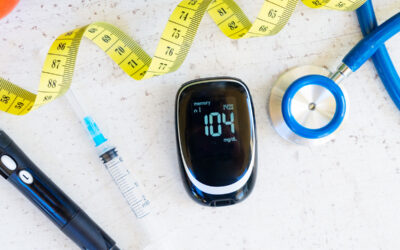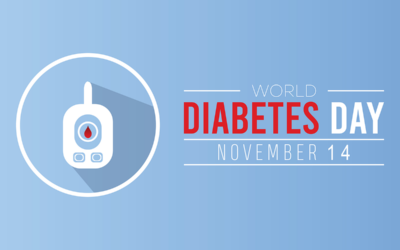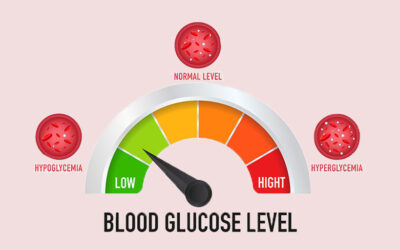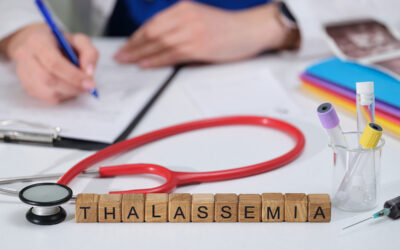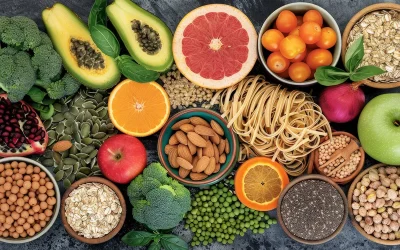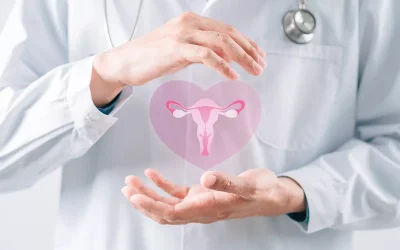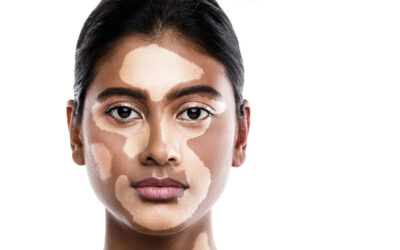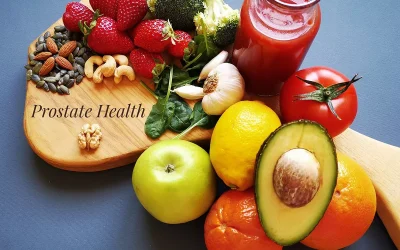Fatty Liver & Indian Diets: The Carbohydrate Connection
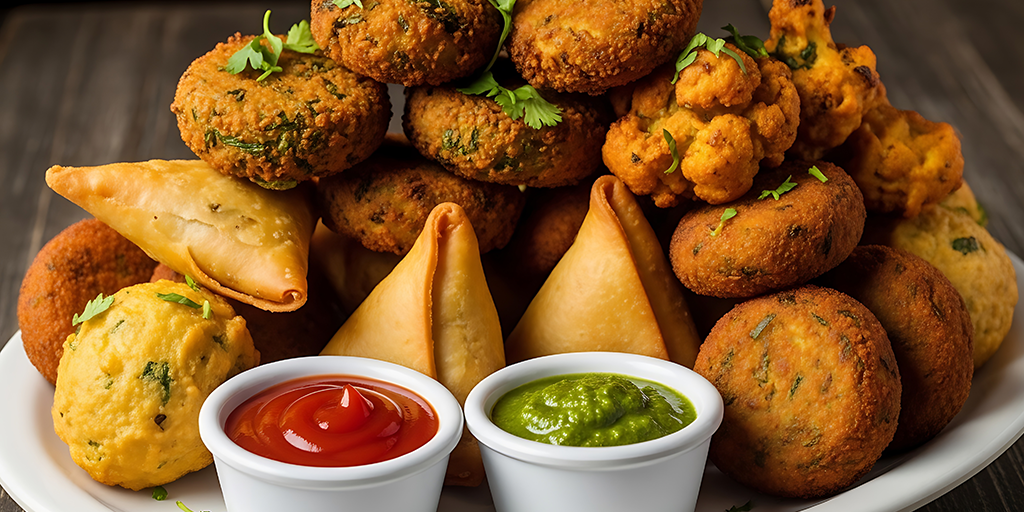
Fatty liver disease has become alarmingly common across India, affecting not only those who drink alcohol, but also millions who don’t. One of the factors contributing to this silent epidemic is a familiar element of our everyday plates: carbohydrates. From rotis and rice to sugary tea and processed snacks, the typical Indian diet is heavily tilted toward carb-rich foods. While carbohydrates are essential for energy, excessive intake can overload the liver, leading to fat accumulation and metabolic imbalance. This fat accumulation can lead to non-alcoholic fatty liver disease (NAFLD), a condition now seen even in young adults. If left unaddressed, it can progress to inflammation, fibrosis, or even cirrhosis.
To help you protect your liver health, in this article, we will discuss the key causes and warning signs of fatty liver disease, how carbohydrate-heavy Indian diets contribute to its rise, the foods that support or harm liver health, and the lifestyle changes that can help prevent long-term liver damage. But first, let’s understand the basics.
Table of Contents
ToggleUnderstanding Fatty Liver
Fatty liver disease occurs when excess fat accumulates in the liver cells, reducing the organ’s ability to perform essential tasks such as filtering toxins, storing energy, and producing vital proteins. While a small amount of fat in the liver is harmless, when fat exceeds 5-10% of the liver’s weight, it begins to cause inflammation and cellular damage.
Types of Fatty Liver Disease
To understand the condition better, it helps to know the two main types of fatty liver disease and what causes them:
- Alcoholic Fatty Liver Disease: This form results from prolonged or heavy alcohol intake. Alcohol disrupts the way the liver breaks down fats, leading to fat buildup and, in some cases, scarring.
- Non-Alcoholic Fatty Liver Disease (NAFLD): The more common type today, NAFLD develops in people who drink little or no alcohol. It is closely associated with obesity, high cholesterol, insulin resistance, and type 2 diabetes.
Stages of Non-Alcoholic Fatty Liver Disease
The disease progresses gradually, and each stage affects the liver differently:
- Simple Fatty Liver (Steatosis): Early stage with fat deposits in the liver but no significant inflammation. At this point, the condition is usually reversible through healthy lifestyle changes.
- Non-Alcoholic Steatohepatitis (NASH): Fat accumulation causes inflammation and liver-cell injury. If not managed, this stage can progress further.
- Fibrosis and Cirrhosis: Long-term inflammation leads to scar tissue formation (fibrosis), which may advance to cirrhosis – an irreversible stage marked by severe loss of liver function.
Why Early Diagnosis Matters
Detecting fatty liver early allows doctors to prevent further damage and restore liver health. Mild cases often improve with balanced nutrition, regular exercise, and weight management. When neglected, however, fatty liver can increase the risk of liver failure, cardiovascular disease, and metabolic complications.
Causes of Fatty Liver
Fatty liver disease develops when the liver receives more fat than it can process or break down. Several factors can contribute to this buildup, many of which are related to modern dietary and lifestyle patterns. Common causes include:
High Carbohydrate and Sugar Intake
One of the leading causes of fatty liver in India is excessive consumption of refined carbohydrates such as white rice, breads, and sweets. These foods quickly raise blood sugar levels, prompting the liver to convert unused sugar into fat, which then gets stored within the liver cells.
Obesity and Sedentary Lifestyle
Limited physical activity and prolonged sitting reduce the body’s ability to use stored fat for energy. This, combined with calorie-dense meals, contributes to fat accumulation not just around the abdomen but also in the liver.
High Cholesterol and Triglycerides
Elevated levels of unhealthy fats in the blood increase the amount of fat delivered to the liver. When this continues unchecked, the liver becomes overwhelmed and begins storing excess fat.
Insulin Resistance or Diabetes
When the body becomes resistant to insulin, glucose uptake by cells decreases, and more fat is synthesised in the liver. People with type 2 diabetes are therefore at higher risk of developing non-alcoholic fatty liver disease (NAFLD).
Alcohol Consumption
Although non-alcoholic fatty liver is increasingly common, alcohol-induced fatty liver remains a major concern. Alcohol impairs the liver’s ability to metabolise fat and triggers inflammation, accelerating damage if consumption continues over time.
Recognising these causes early and addressing them through lifestyle modification is key to preventing progression to severe liver disease.
The Indian Diet and the Carbohydrate Connection
In most Indian diets, carbohydrates take centre stage. Rice, chapati, and potatoes form the bulk of everyday meals, while protein and fibre-rich foods often take a back seat. Though carbohydrates are essential for energy, an excess of it, especially from refined sources, can gradually lead to fat buildup in the liver. This imbalance is now one of the major reasons behind the rising cases of fatty liver disease in India.
How Excess Carbohydrates Affect Liver Health
When large amounts of refined carbohydrates such as white rice, flour, sweets, and sugary drinks are consumed, the body produces more glucose than it can use. The liver converts this surplus sugar into fat through a process known as de novo lipogenesis. Over time, this fat gets stored in liver cells, leading to non-alcoholic fatty liver disease (NAFLD) even in those who do not consume alcohol.
Not All Carbohydrates Are Harmful: Understanding Simple and Complex Carbs
Not all carbohydrates are harmful, but choosing the right kind is crucial. Simple carbs, found in sweets, white bread, bakery products, and soft drinks, are quickly absorbed, causing sudden spikes in blood sugar. In contrast, complex carbs in foods such as brown rice, millets, oats, and legumes are digested slowly, provide sustained energy, and contain dietary fibre that supports liver and digestive health.
Common Indian Diet Habits That Harm the Liver
Many Indians rely heavily on carb-dense foods while neglecting protein, fibre, and healthy fats. Daily habits such as frequent snacking, consuming fried foods, celebrating with sweets, and eating late at night further burden the liver. Over time, these patterns increase the risk of fatty liver, obesity, and type 2 diabetes.
The Need for Balance
A healthy liver depends on a balanced diet, where complex carbohydrates are paired with adequate protein, fibre, and healthy fats. Making small but consistent changes, such as replacing white rice with millets or adding dal, paneer, or eggs to each meal, can significantly reduce liver fat and improve long-term metabolic health.
Common Symptoms of Fatty Liver
Fatty liver disease often develops quietly, with few or no symptoms in the early stages. Many people discover it only during a routine health check-up or ultrasound. However, as fat accumulation increases and liver inflammation begins, certain warning signs may start to appear. Recognising these symptoms early can help prevent the condition from progressing to serious liver damage.
Common signs and symptoms include:
- Fatigue or general weakness: The liver’s reduced efficiency affects energy production, leading to tiredness or low stamina.
- Discomfort or pain in the upper right abdomen: Fat accumulation can cause a feeling of heaviness or mild pain under the ribs on the right side.
- Unexplained weight gain: Metabolic imbalance from liver fat may lead to gradual weight increase, especially around the abdomen.
- Poor digestion and bloating: Sluggish liver function may cause fullness, acidity, or discomfort after meals.
- Elevated liver enzymes: Abnormal results in liver function tests (LFTs) often indicate inflammation or early liver injury.
Since these symptoms are often vague, regular monitoring and consultation with a gastroenterologist are essential for timely diagnosis and management.
Diet and Lifestyle Recommendations for Fatty Liver
Managing fatty liver disease effectively depends on adopting a balanced approach that focuses on wholesome nutrition, regular exercise, and sustainable lifestyle changes. Even small, consistent steps can help reduce liver fat, improve digestion, and restore metabolic balance.
Dietary Tips for a Healthier Liver
A mindful diet plays a crucial role in preventing and reversing early stages of fatty liver disease. The goal is to reduce refined carbohydrates and sugars while increasing the intake of protein, dietary fibre, and healthy fats. Here are some simple dietary changes that can help support better liver health:
- Choose complex carbohydrates: Opt for whole grains such as brown rice, millets, quinoa, and oats instead of white rice or refined flour.
- Add lean proteins: Include sources such as lentils, paneer, tofu, fish, eggs, and lean meats to support liver repair and muscle strength.
- Increase dietary fibre: Eat more fruits, vegetables, and whole legumes to aid digestion and regulate blood sugar levels.
- Use healthy fats: Replace butter and fried oils with healthier options such as olive oil, mustard oil, nuts, and seeds.
- Avoid sugary and processed foods: Cut down on sweets, bakery items, soft drinks, and fried snacks that promote fat buildup in the liver.
Lifestyle Habits That Support Liver Recovery
Dietary changes are most effective when paired with healthy daily routines. Maintaining an active lifestyle enhances metabolism and helps the liver burn excess fat more efficiently. The following habits can help strengthen liver function and promote long-term recovery:
- Exercise regularly: Engage in brisk walking, cycling, yoga, or swimming for at least 30 minutes a day, five times a week.
- Maintain a healthy weight: Even a 5-10% reduction in body weight can significantly improve liver function.
- Manage stress: Practices such as meditation, deep breathing, or mindfulness reduce hormonal imbalances linked to fat storage.
- Sleep well: Aim for 7-8 hours of quality sleep each night to allow the body to repair and regulate metabolism.
- Avoid alcohol and smoking: Both directly harm liver cells and worsen existing liver conditions.
Balanced eating combined with an active, disciplined lifestyle offers the most effective protection against fatty liver progression.
Foods to Avoid and Foods to Include for Liver Health
A liver-friendly diet focuses on reducing foods that trigger fat storage and including those that support detoxification and metabolism. Making informed food choices helps prevent inflammation, control cholesterol, and promote better liver function.
Foods to Avoid
Certain foods put extra strain on the liver and accelerate fat accumulation. Limiting these items can significantly slow down the progression of fatty liver disease. Food to avoid for liver health include:
- Refined grains: White rice, maida-based breads, and noodles that lack dietary fibre.
- Fried and processed snacks: Chips, pakoras, and fast foods cooked in reused or refined oils.
- Sugary foods and desserts: Mithai, bakery items, and sweetened beverages that spike blood sugar.
- Red and processed meats: High in saturated fats, which burden the liver.
- Alcohol and carbonated drinks: Both damage liver cells and increase inflammation over time.
Avoiding these foods helps reduce unnecessary fat buildup and supports long-term liver recovery.
Foods to Include
Incorporating nutrient-rich foods strengthens liver cells and helps the organ function efficiently. These foods also aid digestion, improve cholesterol balance, and provide antioxidants that fight inflammation. Food to include are:
- Green leafy vegetables: Spinach, methi, and kale help flush out toxins.
- Garlic and turmeric: Contain natural compounds that reduce liver fat and inflammation.
- Whole grains and legumes: Brown rice, millets, dals, and beans provide steady energy and dietary fibre.
- Fruits rich in antioxidants: Apples, papaya, and citrus fruits support detoxification.
- Omega-3 sources: Flaxseeds, walnuts, and fatty fish such as salmon and mackerel help lower triglycerides.
- Coffee (in moderation): Linked to reduced risk of liver fibrosis and improved enzyme levels.
Combining these foods in daily meals not only supports liver health but also improves overall metabolism and energy levels.
When to Consult a Doctor for Fatty Liver
Fatty liver disease often progresses silently, which makes regular monitoring and timely medical consultation extremely important. Early evaluation helps prevent the condition from advancing to more serious stages such as fibrosis or cirrhosis. Seeking professional care also ensures that related health issues such as obesity, diabetes, high blood pressure, or hepatitis C are managed effectively. Consult a doctor if any of the following signs or situations apply:
- Persistent abdominal pain or bloating: A dull ache or pressure in the upper right abdomen could signal liver inflammation.
- Chronic fatigue or nausea: Prolonged tiredness or digestive discomfort may indicate impaired liver function.
- Abnormal liver function test (LFT) results: Elevated liver enzymes require further evaluation through imaging and specialist consultation.
- Jaundice or unexplained weight loss: Yellowing of the skin or eyes, coupled with sudden weight loss, could mean the condition is worsening.
- History of metabolic disorders: People with diabetes, obesity, or high cholesterol should undergo periodic liver screenings even if they have no symptoms.
Early diagnosis allows doctors to recommend appropriate investigations, such as ultrasound or FibroScan, and guide patients toward dietary, lifestyle, or medical interventions that prevent further damage.
Why Choose Graphic Era Hospital for Fatty Liver Treatment?
At Graphic Era Hospital, the focus on liver health goes beyond treating symptoms. It centres on identifying root causes, restoring metabolic balance, and guiding patients toward sustainable recovery. Each treatment plan is tailored to individual health needs, supported by advanced technology and expert medical care. Here’s what makes Graphic Era Hospital a trusted destination for comprehensive fatty liver treatment:
Experienced Gastroenterologists and Hepatologists
At Graphic Era Hospital, our specialists bring years of expertise in diagnosing and managing complex liver conditions such as fatty liver disease, hepatitis, and cirrhosis. They combine advanced medical knowledge with a personalised approach, ensuring every patient receives precise diagnosis, effective treatment, and continuous guidance on nutrition and lifestyle for long-term liver health.
Advanced Imaging and Diagnostic Facilities
Graphic Era Hospital is equipped with advanced ultrasound andimaging facilities that enable early detection of fatty liver and accurate assessment of liver health. These technologies help determine the severity of the condition and guide specialists in creating personalised treatment plans for each patient.
Personalised Diet and Lifestyle Counselling
Dieticians and lifestyle experts at the hospital work closely with patients to create customised plans focusing on balanced nutrition, weight management, and exercise. This integrated approach helps reverse early liver fat accumulation and prevents future complications.
Patient-Centred and Continuous Care
Care at Graphic Era Hospital extends beyond the consultation room. Patients receive continuous monitoring, follow-up assessments, and compassionate guidance throughout their recovery journey, ensuring long-term liver health and overall well-being.
Conclusion
Fatty liver disease is a growing concern in India, largely driven by diets rich in refined carbohydrates and low in protein and fibre. However, with right awareness and early lifestyle changes, it is possible to prevent and even reverse its early stages. In addition, choosing wholesome meals, staying active, and undergoing regular check-ups can make a lasting difference to liver health.
At Graphic Era Hospital, specialists combine advanced diagnostics, expert medical care, and personalised nutrition plans to help patients manage fatty liver effectively and improve overall metabolic well-being. To book a consultation at Graphic Era Hospital, call 1800-889-7351. A healthy liver truly begins with smart food choices and timely medical guidance.
Frequently Asked Questions
Is fatty liver dangerous?
Fatty liver in its early stages is often reversible, but if left untreated, it can progress to inflammation, fibrosis, or cirrhosis. Early diagnosis and lifestyle changes greatly reduce the risk of serious complications.
Can fatty liver be reversed naturally?
Yes. In mild or early cases, lifestyle modifications such as regular exercise, maintaining a healthy weight, and following a balanced diet with complex carbohydrates and lean proteins can help reverse fatty liver.
How can an Indian diet be modified for fatty liver?
Replace white rice and refined flour with millets, brown rice, or whole grains. Include lentils, paneer, tofu, fish, and plenty of fruits and vegetables. Avoid sweets, fried snacks, and sugary drinks.
Does eating rice cause fatty liver?
Eating rice occasionally is not harmful, but a diet dominated by white rice or refined carbs can raise blood sugar levels and promote fat accumulation in the liver. Switching to brown rice or millets is a healthier choice.
Are millets good for fatty liver?
Yes. Millets such as jowar, bajra, and ragi are rich in fibre and nutrients that help regulate blood sugar and improve liver function.
Is ghee harmful for fatty liver patients?
In small quantities, pure ghee is safe because it contains healthy fats. However, overconsumption of ghee, butter, or fried foods can worsen fat buildup in the liver.
What is the best breakfast for fatty liver?
A balanced breakfast could include oats or poha with vegetables, boiled eggs, sprouts, or fruit with nuts. This combination provides complex carbs, fibre, and protein for better metabolism.
Can vegetarian diets lead to fatty liver?
Yes, if the diet is high in refined carbs and low in protein. Vegetarians should include dals, pulses, soya, paneer, and curd regularly to maintain liver health.
Can exercise help reverse fatty liver disease?
Regular exercise, even 30 minutes of brisk walking daily, helps burn excess fat, improve insulin sensitivity, and reduce liver fat levels.
How long does it take to improve fatty liver with diet and lifestyle changes?
Improvement varies by individual. With consistent diet control and regular exercise, early-stage fatty liver can show significant recovery within 3–6 months.
Where can I find the best fatty liver treatment near me in Dehradun?
Graphic Era Hospital in Dehradun offers comprehensive diagnosis and treatment for fatty liver disease. The hospital’s experienced gastroenterologists provide personalised care supported by advanced imaging and dietary counselling facilities.
By Specialities
- Bariatric Surgery
- Cancer Care
- Cardiology
- Dental
- Dermatology
- Diabetes & Endocrinology
- Endocrinology and Diabetes
- ENT (Ear Nose Throat)
- Eye Care
- Gastroenterology
- Haematology
- Health Care
- Health Tips
- Hematology
- Hepatology
- Internal Medicine
- Mental Health and Behavioural Sciences
- Metabolic
- Neonatology
- Nephrology
- Neurology
- Nutrition & Dietetics
- Obstetrics & Gynaecology
- Oncology
- Ophthalmology
- Orthopaedics
- Paediatric
- Physiotherapy & Rehabilitation
- Plastic and Reconstructive Surgery
- Psychology
- Pulmonology
- Rheumatology
- Spine
- Urology
Recent Posts
- Fatty Liver & Indian Diets: The Carbohydrate Connection
- Nutrition for Diabetes: What to Eat and What to Avoid
- World Diabetes Day 2025: Envisioning a Diabetes-Free World
- The Protein Gap in Indian Diets: How Excess Carbs Lead to Pot Belly and Poor Metabolism
- World Pneumonia Day 2025: A Global Fight Against a Preventable and Treatable Disease
Need expert medical advice?
Share your details and our healthcare specialists will reach out to assist you.
By proceeding, you acknowledge and agree to our Privacy Policy, Terms of Use, and Disclaimer.
